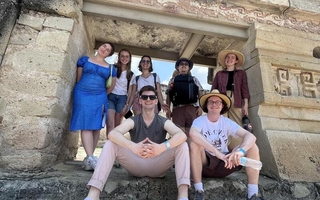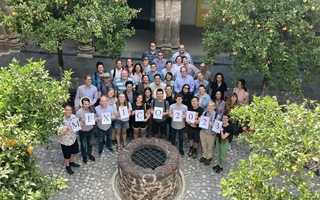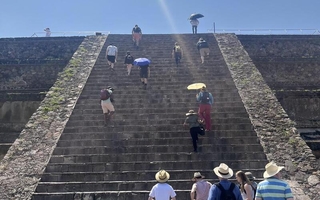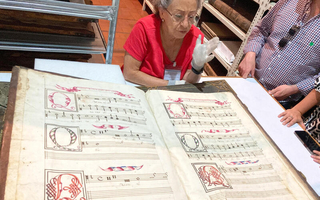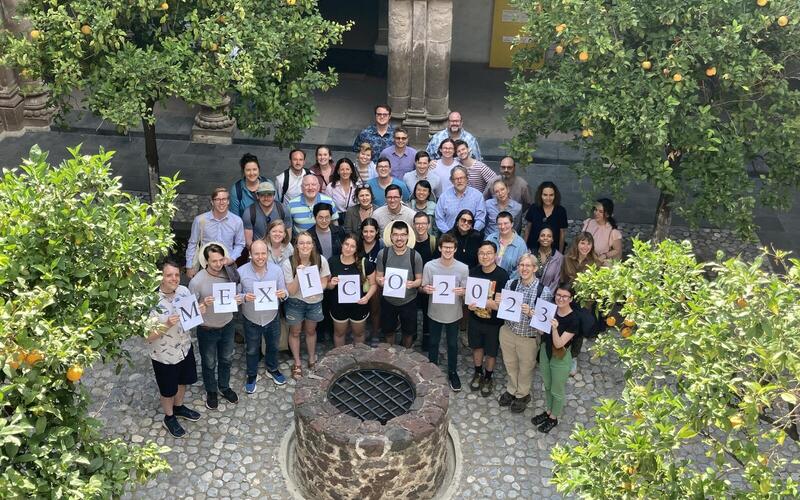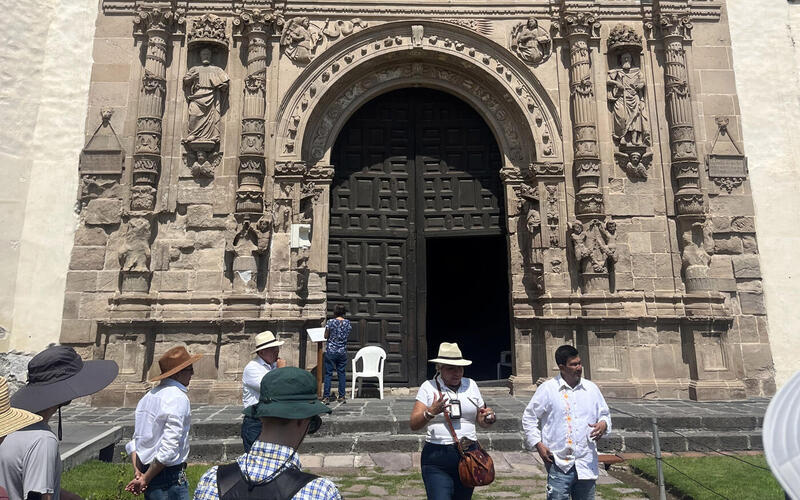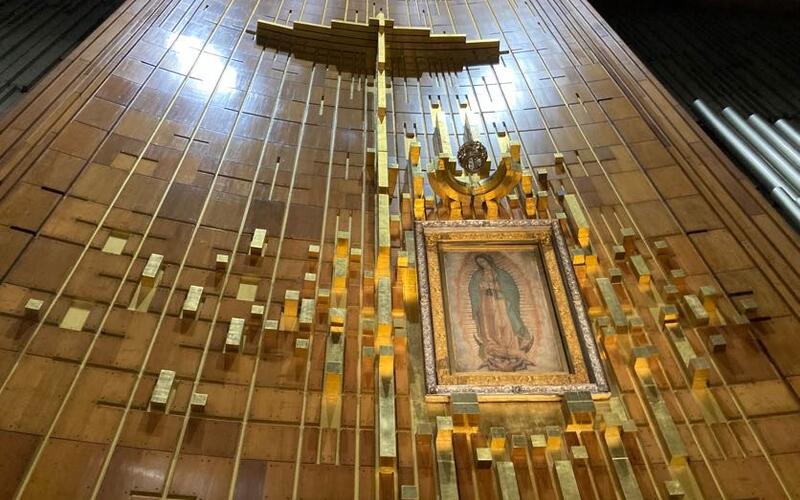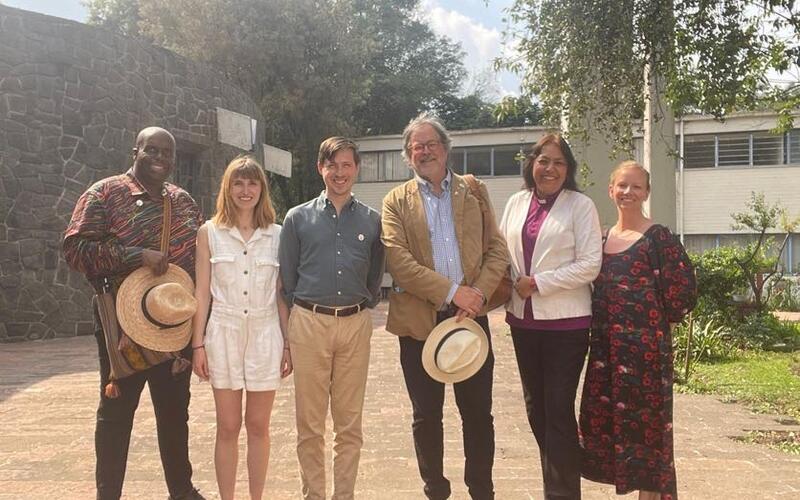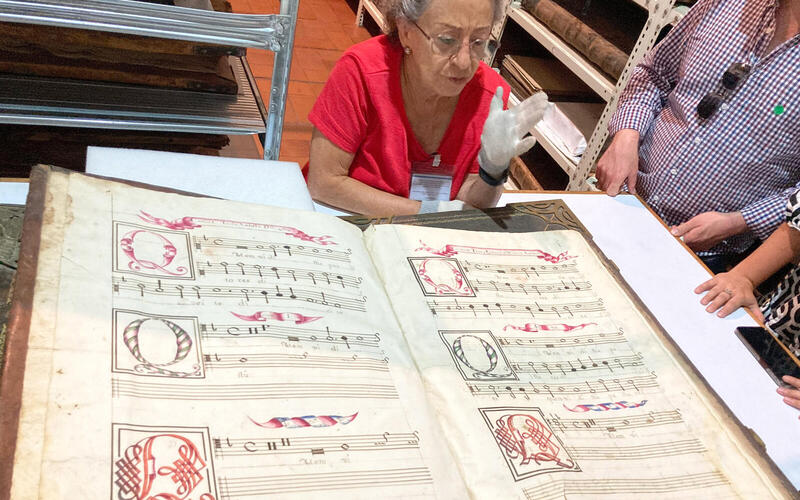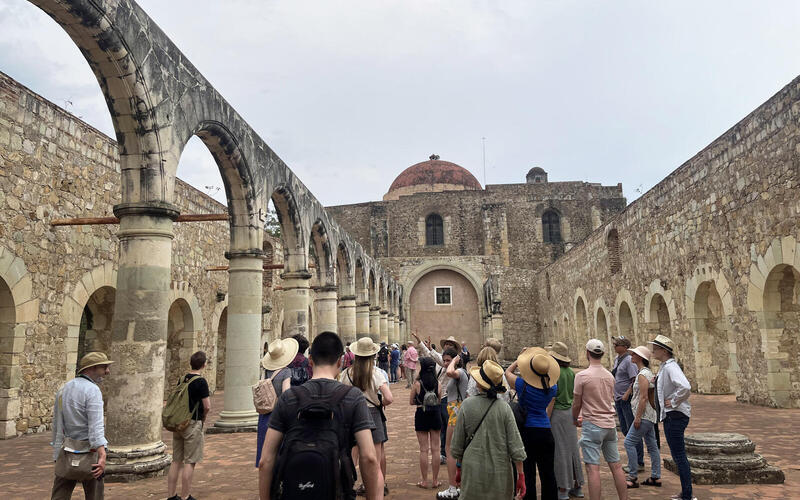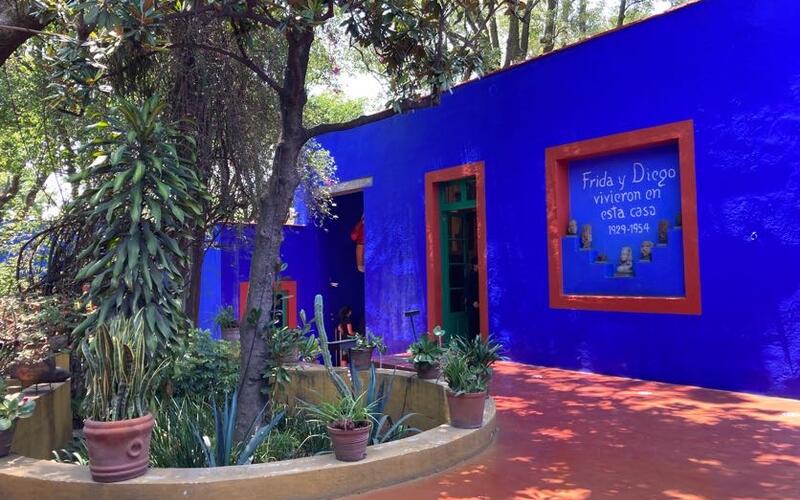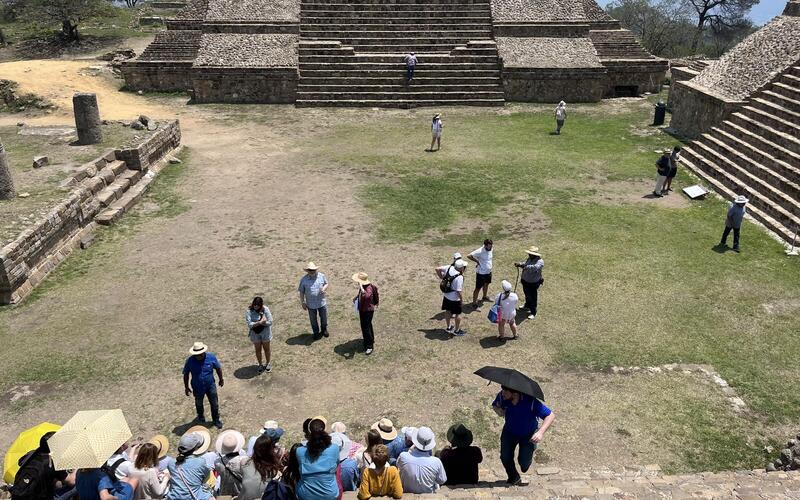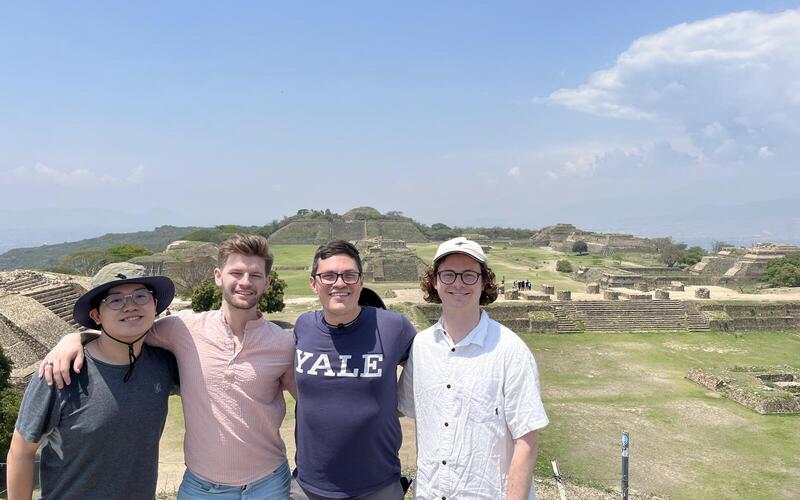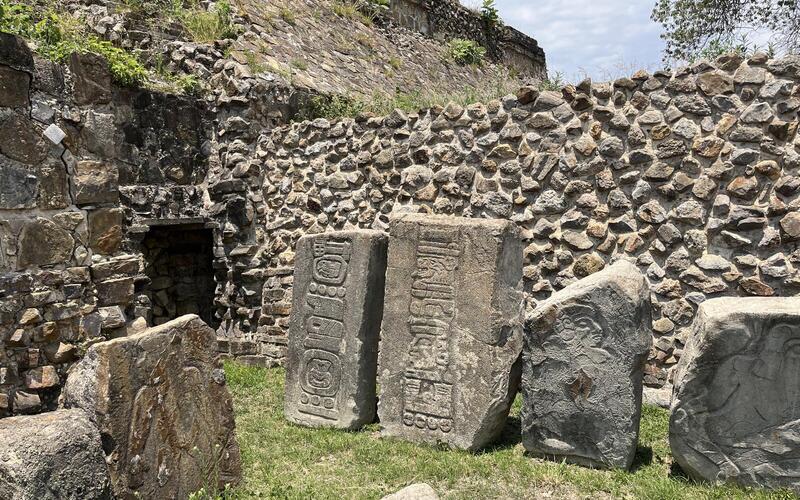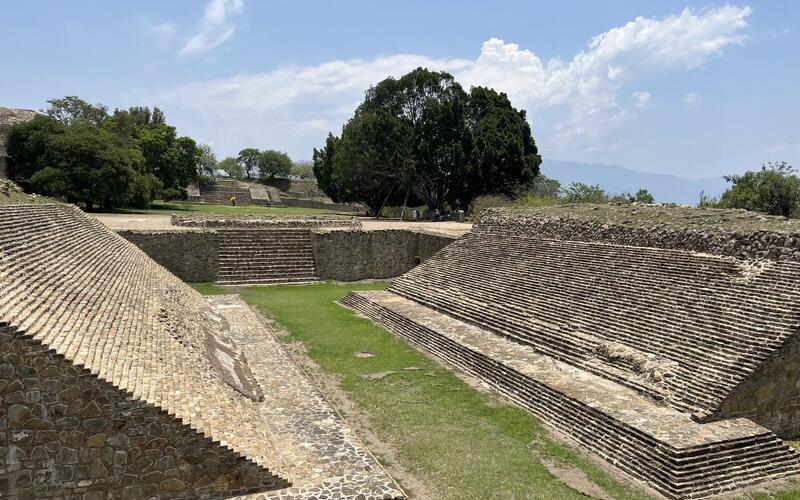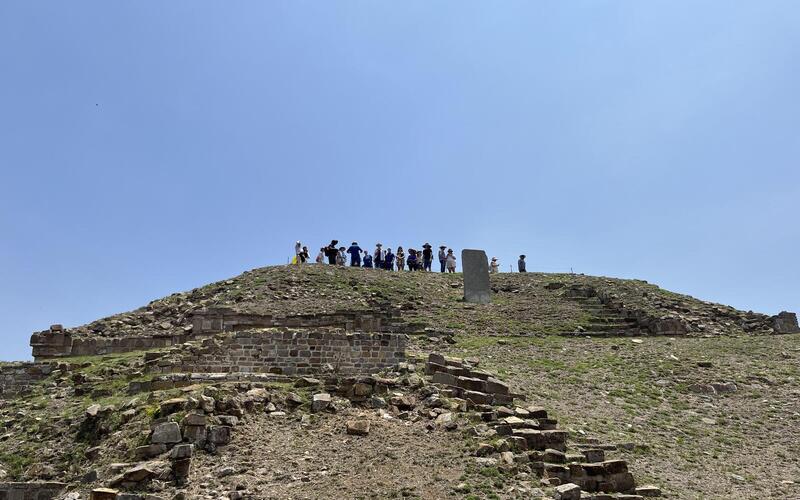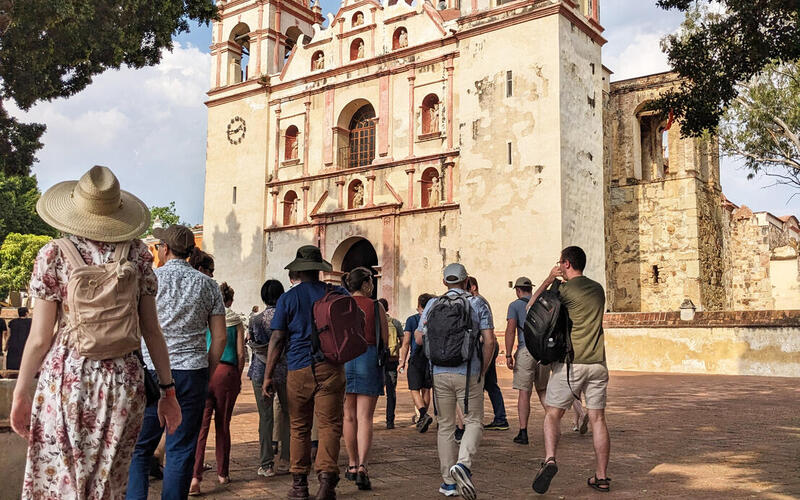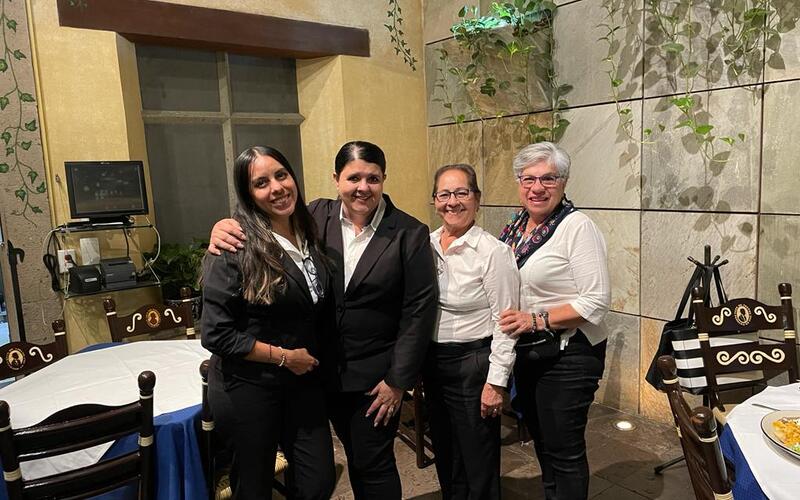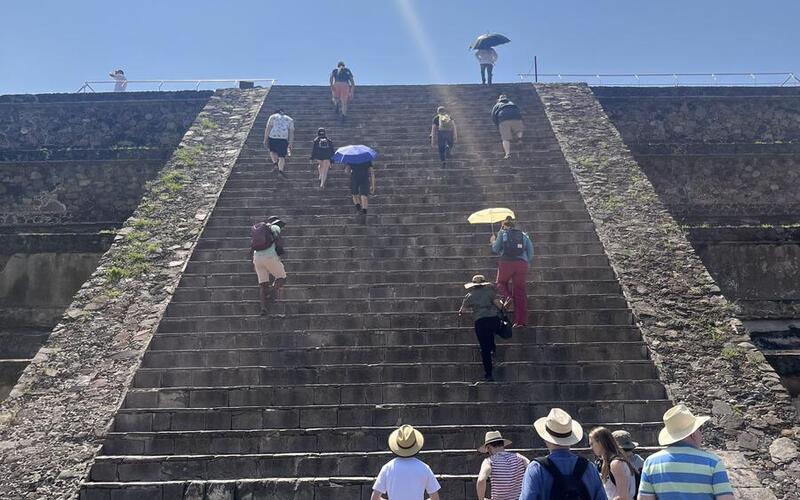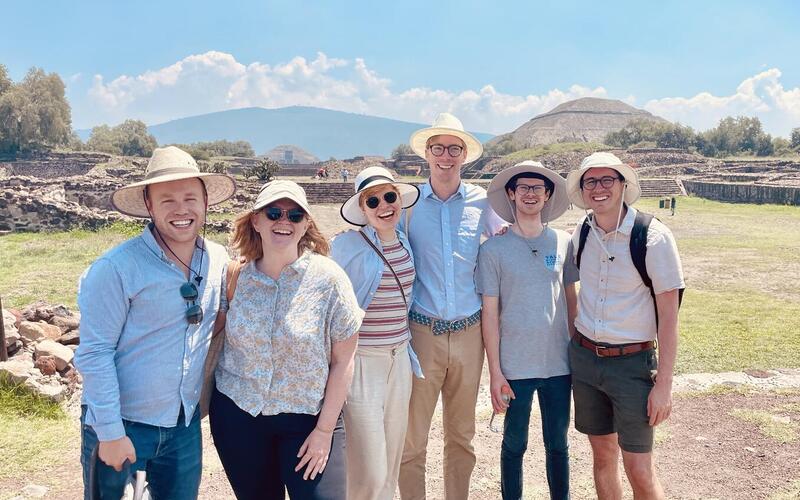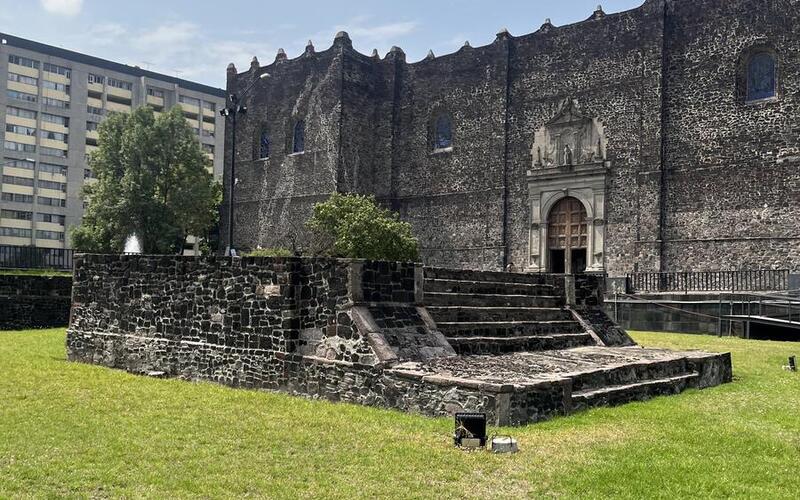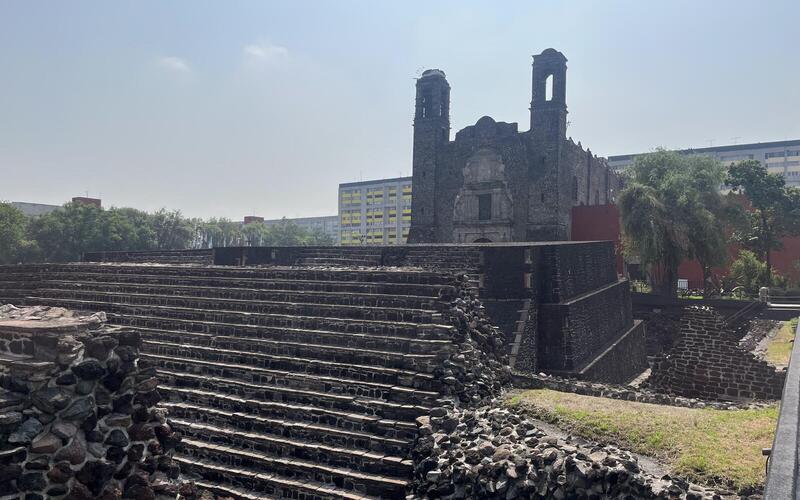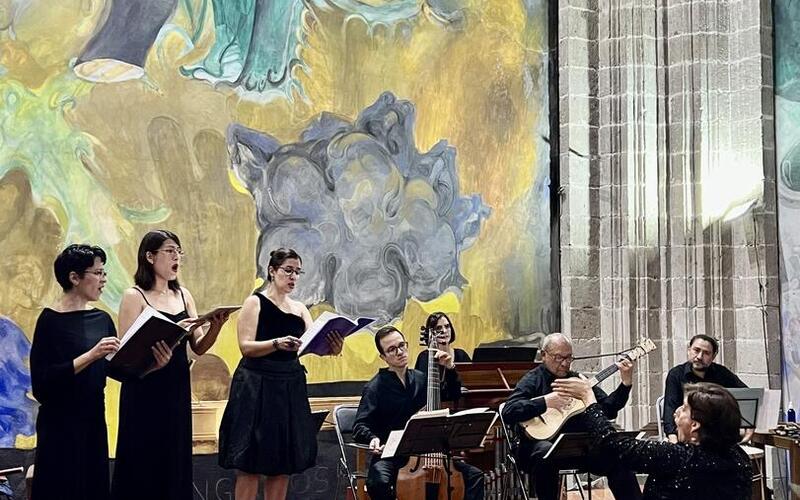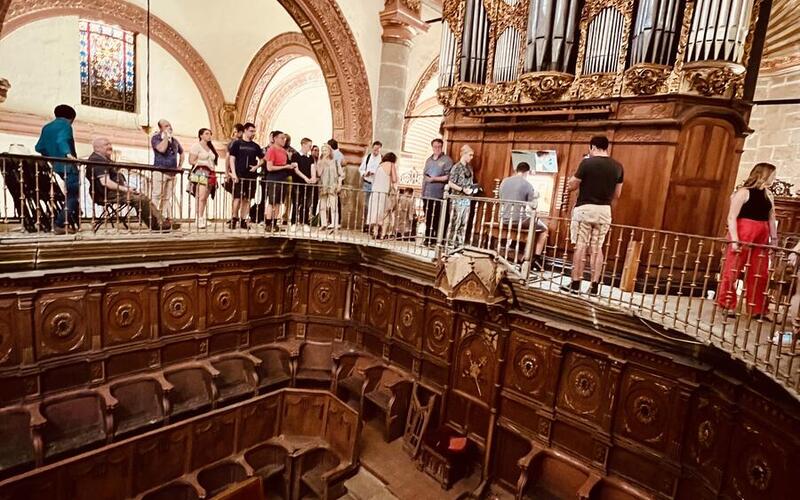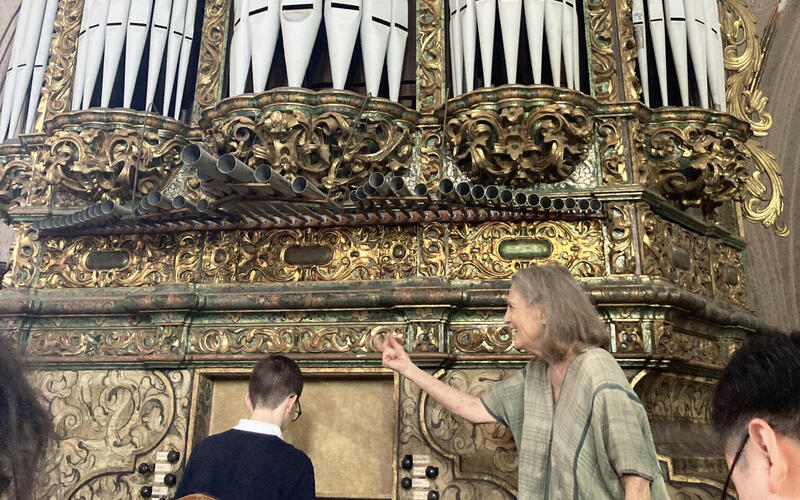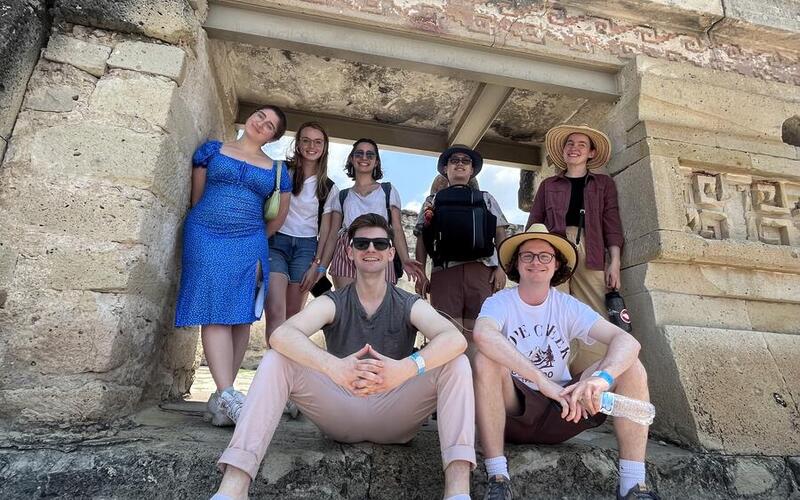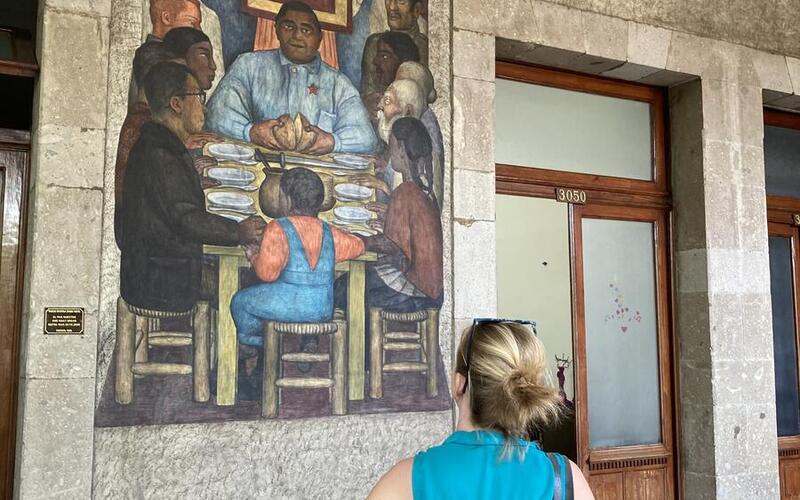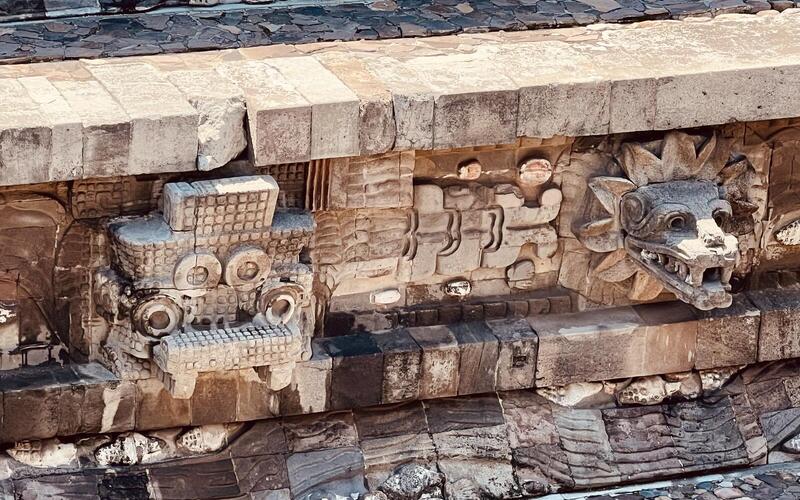Typically, ISM study tours are preceded by a series of fall lectures in Colloquium that give us some context about what we will see. This year, we had planned to go to Peru, so our preparation was aimed in that direction. Unfortunately, the details of those lectures weren’t directly relevant to the trip we actually took. There was a moment, however, when our tour guide at Mitla said, “everything has meaning.” That simple, oft-used phrase was enough to make a connection with our lectures about Peru. When traveling, one of the first paths into understanding a new place doesn’t have to be a complete history. We can begin by acknowledging that despite all we don’t know, the places we visit were built one detail at a time by people who cared very much. Every blueprint and color of paint, the recurring presence of a gemstone, even what kinds of tourist traps we find—all of these are clues to how a place came to be what it is. Coming into this trip with less background knowledge than students on study tours in the past forced us to lean on this principle and look more closely at what we didn’t understand. It meant we saw Diego Rivera and Frida Kahlo not only through their artwork, but through the objects in their home and studios that convey the joys and pains of their relationship. We learned about Mexico one piece at a time through each rock at an archaeological site, gallery at a museum, or sip of hot chocolate.
We spent the second half of the trip in the vicinity of Mexico City. Naturally, one of our first stops was to see the famous Shrine to Our Lady of Guadalupe. The shrine is housed within the Basilica de Guadalupe, the most visited Marian precinct in the world, which is dedicated to the Virgin Mary and her invocation of Guadalupe. Here, as with so many other sites, the complicated impact of colonization loomed large. The complex is situated on land that was sacred to the Aztec people; yet, an Aztec convert to Christianity, Juan Diego (born Cuauhtlatoatzin), was largely responsible for the first church built in this area. In 1531, Juan Diego received a vision of the Virgin Mary at the site instructing that a church be built there in her honor. After the friars initially would not believe that the Virgin had appeared to an indigenous person, Juan Diego witnessed several miracles, one of which was the famous imprinting of the image of Mary on his tilma, an indigenous outer garment. Now, the complex contains several churches and attracts millions of visitors every year who want to see the image of the Virgin for themselves.
The next day included stops at the Aztec ruins of Tlatelolco and an exclusive visit to the National Museum of Anthropology. At Tlatelolco, our guides taught us about the Aztecs, including their calendar, gods, daily life, and architectural practices. Then, we learned how these interfaced with Spanish colonial practices through a water cistern mural. While the remnants of the mural seem to depict elements of indigenous art, it was also designed so that those who bent down to take water would, in effect, be reverencing its central cross. Afterward, we proceeded to the Museum of Anthropology where we took a deeper dive into the many different cultures and civilizations that have inhabited what is now Mexico. We viewed countless incredible artifacts and made many connections with the sites we had visited already as well as some coming up on our itinerary. Among our favorite exhibits was a reconstruction of Tomb 104 from Monte Albán, which had been closed to the public during our visit.
